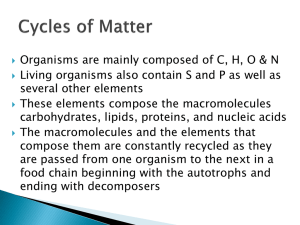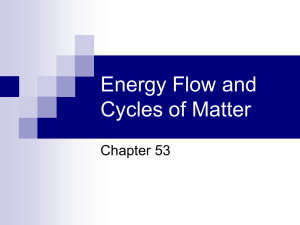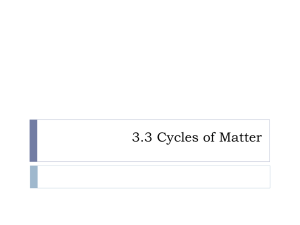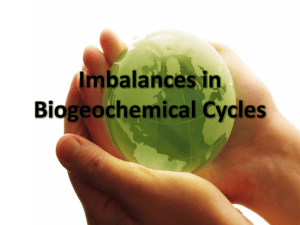The Nitrogen Cycle - Western Reserve Public Media
advertisement
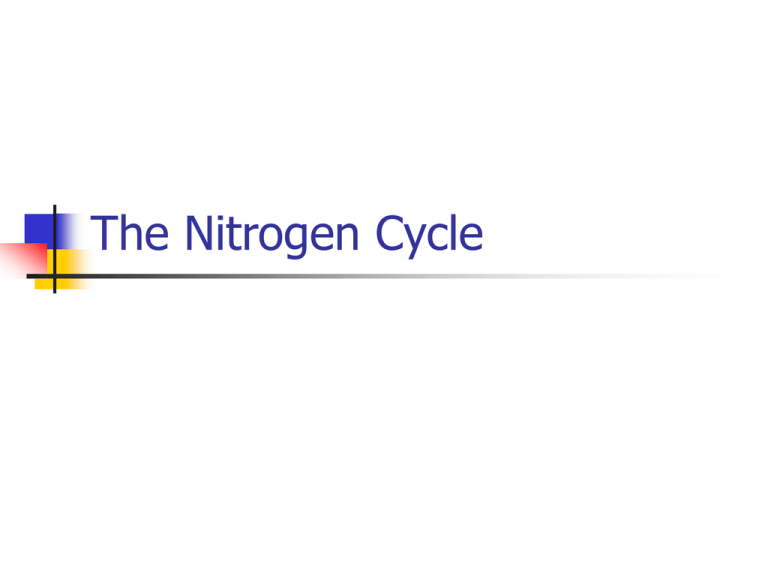
The Nitrogen Cycle Nitrogen The most abundant element in earth’s atmosphere = approximately 78%. Used to carry out many life functions. Especially important for plant life. Nitrogen Fixation Almost completely unusable for living things in its gaseous form (atmosphere). Gaseous nitrogen must be converted, or fixed, by bacteria before it can be used. The process bacteria use to fix nitrogen is called nitrogen fixation. Nitrogen Fixing Bacteria Special bacteria fix the nitrogen in the air so plants and other producers can use it. Many of these bacteria live in the soil. Some plants, especially legumes (beans), have special bumps or nodes on their roots where these bacteria can live. Nitrogen for Other Organisms Once the nitrogen is fixed by bacteria, plants use it and it becomes part of the plant. Other organisms that feed on the plants take in nitrogen and use it. Nitrogen is passed through the food chain. Decomposers When an organism dies, decomposers break down the body. Nitrogen from the body is returned to the atmosphere. The bacteria that decompose bodies are a different type of bacteria than the ones that fix nitrogen. _________________ Cycle Animals eat plants and take in nitrogen. Plants take i fixed nitroge Animals eat plants and take in nitrogen. Plants take in fixed nitrogen. Plants and animals die and are decomposed. Nitrogen returns to atmosphere. Nitrogen-fixing bacteria pull nitrogen from atmosphere and fix it so plants can use it. The Cycle Goes On and On … Animals eat plants and take in nitrogen. Plants take in fixed nitrogen. Animals eat plants and take in nitrogen. Plants take in fixed nitrogen. Plants and animals die and are decomposed. Nitrogen returns to atmosphere. Nitrogen-fixing bacteria pull nitrogen from atmosphere and fix it so plants can use it. Human Impact — Fertilizers We overuse nitrogen-rich fertilizers, which dissolve in surface runoff and ground water. Fertilizers end up in waterways as they wash into streams and ponds. Increased nitrate levels cause plants to grow rapidly, filling the water until the plants use up the nitrate supply and die. The number of herbivores increase when the plant supply increases. When the plants die, the herbivores are left without a food source. In this way, changes in nutrient supply affect the entire food chain. Other Human Impact Burning fossil fuels and forests releases various forms of nitrogen, contributing to global warming and acid rain. The waste associated with livestock farming releases a large amount of nitrogen into soil and water. In the same way, sewage waste adds nitrogen to soils and water. What We Need to Do Be careful with nitrogen-rich fertilizers. Burn less fossil fuel, forest land, etc. Treat sewage properly. Find ways to deal with livestock wastes.




